National War Memorial
Tomb of the Unknown Warrior, Puke Ahu (Mount Cook)
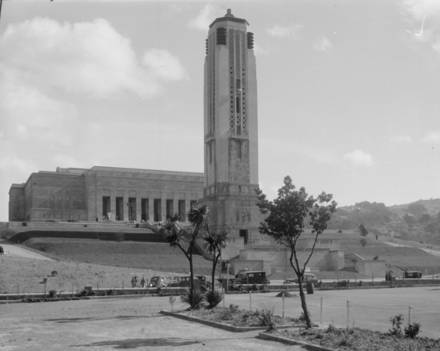
National Library reference: National War Memorial Carillon, Buckle Street, Wellington, 1936. New Zealand Free Lance: Photographic prints and negatives. Ref: 1/2-100835-G. Alexander Turnbull Library, Wellington, New Zealand

Image: WCC - Charles Collins, 2015
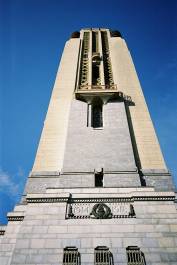
War Memorial and Carillon (Image: WCC, 2006)
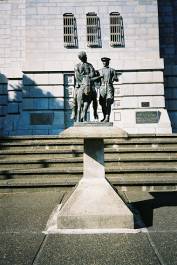
War Memorial and Carillon (Image: WCC, 2006)
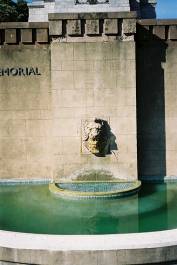
War Memorial and Carillon (Image: WCC, 2006)
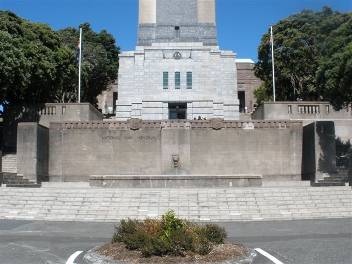
War Memorial and Carillon (Image: WCC, 2006)
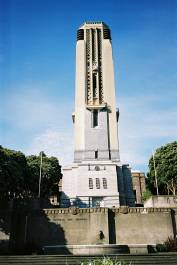
War Memorial and Carillon. (Image: WCC, 2006)
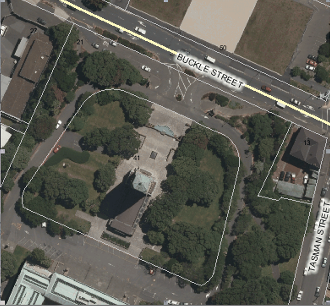
Extent: CityView 2012
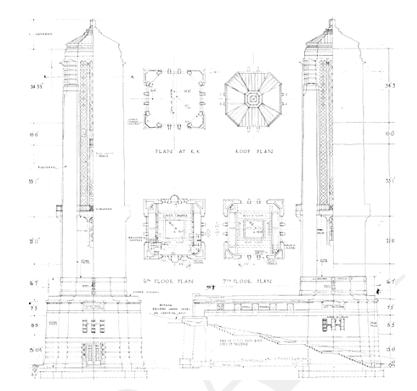
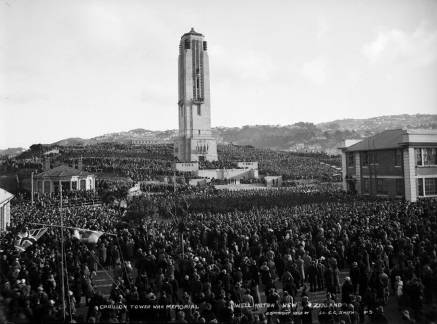
National Library reference: Carillon dedication. Smith, Sydney Charles, 1888-1972: Photographs of New Zealand. Ref: 1/1-020293-G. Alexander Turnbull Library, Wellington, New Zealand. http://natlib.govt.nz/records/22869477
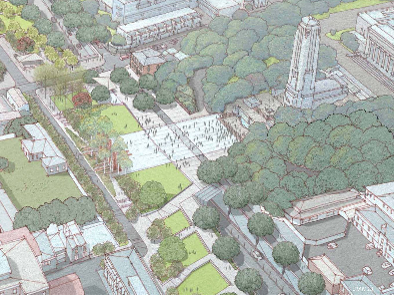
‘National Memorial Park’ Ministry for Culture and Heritage website accessed April 2013 http://www.mch.govt.nz/nz-identity-heritage/national-war-memorial/national-war-memorial-park
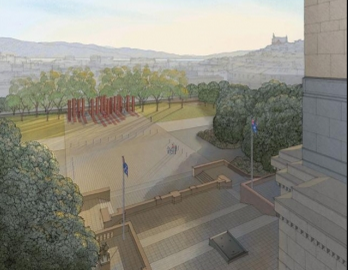
‘National Memorial Park’ Ministry for Culture and Heritage website accessed April 2013 http://www.mch.govt.nz/nz-identity-heritage/national-war-memorial/national-war-memorial-park
-
Constructed
1931 - 1932
-
-
Architect(s)
-
Builder(s)
Unknown
-
The Memorial includes the Carillon, Hall of Memories, Tomb of the Unknown Warrior, pool, steps and forecourt.
It is a place of pilgrimage and ceremony, especially for families who lost people in overseas conflicts.
The Carillion is a distinctive landmark visible from many parts of the city.
-
Downloadable(s)
-
close
History
-
In 1924 the Government decided to replace the Dominion Museum (1865) and, in 1928, it chose a site occupied by the Mt Cook gaol on Mt Cook. The Government had been considering the building of a National War Memorial since the end of World War I and it had even voted £100,000 for the purpose in 1919. It decided to incorporate such a structure with the Museum.
Two years earlier the Wellington War Memorial Carillon Society was formed and in May that year they raised £10,000 to buy a 49 bell carillon. The bells were offered to the Wellington Citizen’s War Memorial Committee but they declined in favour of a silent memorial, the Cenotaph, on Lambton Quay. The bells were then offered to the Government to be included in the National War Memorial.
The carillon bells were made at Gillet and Johnston in Croydon, England, with the tender being let in July 1927. While planning began on the memorial the bells were lent to the Newcastle-on-Tyne Exhibition. They were then temporarily hung in Hyde Park, before being shipped to New Zealand.
A competition for the design of the National Museum and National War Memorial took place in 1929. The winner was the firm of Gummer and Ford. The permit to build the war memorial was granted on 30 March 1931 and work was completed in April the following year. The contractor was P. Graham and Sons of Christchurch and the estimated cost was £18,500. The structure was dedicated by the Rev. Dr T.H. Sprott on Anzac Day, 1932.
The lower south face of the carillon, and its interior, were left unfinished to allow the building of the Hall of Memories later. The Depression and World War II intervened and it was not until 1949 that plans for the hall were completed, again by Gummer and Ford. Work did not start until 1960 and the building was not completed and opened until 1964. The contractors, 30 years on, were again P. Graham and Sons.
The carillon tower was restored in 1981 and, in 1985 the bells were restored and augmented with 16 treble bells, to bring the total number to 65. The original specification was 69. The whole complex was rededicated by Queen Elizabeth II on 26 February 1986.
On 11 November 2004 the remains of an unidentified New Zealander who died during the First World War were interred in the Tomb of the Unknown Warrior which was designed by Kingsley Baird.
The War Memorial and Carillon continues to play an important role in New Zealand society. It stands as a permanent tribute to those New Zealanders who have been killed in overseas conflicts and therefore allows younger generations to reconnect with the past so that the fallen soldiers and the horrors of war are not forgotten.
The area to the north of the Carillon and War Memorial is currently being redeveloped to form the National War Memorial Park. The park will be a large open space and has been designed to suit the commemorative ceremonies planned for the Centenary of the First World War. State Highway 1 will be diverted into a tunnel and the space above ground will be re-configured to form a park with views across the city. The park should be completed in time for the Anzac Day 2015 commemorations. The Carillon is currently scaffolded and is undergoing maintenance and repair work that includes some seismic strengthening of the tower (2013).
-
Modifications
close
-
1931
-
Wellington Memorial Carillon Tower 00056:119:B10786
-
2004
-
Tomb of the Unknown Warrior 00078:1139:117186
-
2004
-
Building upgrade with new draining and water services 00078:1502:115795
-
2007
-
Replace existing mezzanine gallery floor in foyer to strengthen structure and install historic pipe organ 00078:2963:158465
-
2012
-
Access stair and platform upgrades within the Bell Tower and some seismic strengthening SR 246963
-
2013
-
Construction of the National War Memorial Park
-
-
Occupation History
close
-
1931
-
Crown
-
-
-
close
Architectural Information
-
Building Classification(s)
close
Not assessed
-
Architecture
close
The National War Memorial and Carillon is New Zealand’s foremost symbolic and commemorative building. It consists, principally, of a campanile (bell tower), and a base below which holds the Hall of Memories, a shrine of remembrance commemorating the sacrifices of war. Although the Hall was completed almost 30 years after the Carillon, the two are similar in design terms.
The Carillon is essentially an Art Deco design, with a Classical emphasis at the lower levels. It was designed as a sister to the Peace Tower Carillon in the Ottawa Parliament Buildings, Canada. It houses 65 bells and rises to a height of 50.6 metres. A lion-headed fountain carved by R.O. Gross forms part of a grand staircase which leads to the campanile on the north-facing slope of Mt Cook.
The campanile itself consists of a marble base and a slightly tapering tower, with four almost identical facades of grey marble and buff-coloured cement plaster. Recessed precast concrete grills, three to each facade, allow music from the bells to pass through the upper tower. The abstract, zigzag pattern of these trellises becomes increasingly intricate as the tower rises and appears to accentuate the height of the structure. The capitals of the campanile are formed of five semi-circular copper louvres at each of the four chamfered corners, above which a dentilled pavilion roof is topped with the ‘lamp of remembrance.’
The Hall of Memories is approached through an octagonal vestibule in the base of the carillon tower. On the east and west walls, the various battlefields of the two world wars are inscribed on panels of Hanmer marble. The hall itself is approached through bronze entry gates and has, as a focal point, a statuary group in bronze on a white pedestal in the apse at the south end. Six recesses on either side of the hall have been designed as small chapels to commemorate the different arms of the forces in which New Zealanders served.
At the time the carillon was built it was the most prominent landmark in the city. It has lost some of this prominence but still makes a distinct contribution to the character of the city, particularly when viewed from the surrounding hills.
Plans for the War Memorial carillon tower, 30 March 1931, 00056:119:B10786, Wellington City Archives.
-
Materials
close
Concrete
Hanmer Marble
Mount Summers limestone
Canaan Marble
-
Setting
close
The War Memorial and Carillon is located on the northern slopes of Mount Cook, Wellington and over looks Buckle Street. From Buckle Street a series of steps lead up to the memorial while two access roads from Buckle Street loop around to the back of the memorial. Behind the memorial, stands the former National Museum and Art Gallery which is now part of Massey University. On both its western and eastern sides the memorial is surrounded by trees. These separate it from the former Mount Cook police barracks to the east and the grounds of the former Defence depot building to the west. Because of its height and its position on the slopes of Mount Cook, the tower of the memorial is visible from many parts of Wellington.
-
Building Classification(s)
close
-
close
Cultural Value
The National War Memorial is New Zealand’s foremost symbolic and commemorative building and has high aesthetic value for the high-quality of its design, workmanship and materials.
The building is a significant landmark that is sited on the northern slopes of Mount Cook (Puke Ahu) and is visible from many parts of the city and the hills around.
The structure is associated with the First World War and successive wars in which the New Zealand armed forces have participated. It has been the focus of the nation’s remembrance and the location of the main Anzac Day Ceremonies since its completion in 1932.
The National War Memorial is New Zealand’s foremost symbolic and commemorative building, a place of pilgrimage and ceremony, and of very high social value to the country. The structure has symbolic and commemorative value to members of the New Zealand Defence Force and the families of those who lost members while serving in overseas conflicts.
-
Aesthetic Value
close
-
Architectural
Does the item have architectural or artistic value for characteristics that may include its design, style, era, form, scale, materials, colour, texture, patina of age, quality of space, craftsmanship, smells, and sounds?
The National War Memorial is New Zealand’s foremost symbolic and commemorative building and has high aesthetic value for the high-quality of its design, workmanship and materials.
-
Group
Is the item part of a group of buildings, structures, or sites that taken together have coherence because of their age, history, style, scale, materials, or use?
The structure was built in conjunction with the former National Museum and Art Gallery (1932-36). Together the two structures lie on a formal axis that was originally planned to extend into a tree lined boulevard to Courtenay Place.
-
Townscape
Does the item have townscape value for the part it plays in defining a space or street; providing visual interest; its role as a landmark; or the contribution it makes to the character and sense of place of Wellington?
The building is a significant landmark that is sited on the northern slopes of Mount Cook (Puke Ahu) and is visible from many parts of the city and the hills around.
-
-
Historic Value
close
-
Association
Is the item associated with an important person, group, or organisation?
The structure is associated with the New Zealand Defence Force and the soldiers who died while serving in the First World War.
-
Association
Is the item associated with an important historic event, theme, pattern, phase, or activity?
The structure is associated with the First World War and successive wars in which the New Zealand armed forces have participated. It has been the focus of the nation’s remembrance and the location of the main Anzac Day Ceremonies since its completion in 1932.
-
- Scientific Value close
-
Social Value
close
-
Identity Sense Of Place Continuity
Is the item a focus of community, regional, or national identity? Does the item contribute to sense of place or continuity?
The structure is the site of New Zealand’s Anzac Day dawn service and the Tomb of the Unknown Warrior. Therefore it is a place of national identity.
-
Public Esteem
Is the item held in high public esteem?
The structure is held in high public esteem.
-
Sentiment Connection
Is the item a focus of community sentiment and connection?
The building is the national memorial to those New Zealanders who died while serving in the armed forces, the structure has sentimental value to people on a national level.
-
Symbolic Commemorative Traditional Spiritual
Does the item have symbolic, commemorative, traditional, spiritual or other cultural value for the community who has used and continues to use it?
The National War Memorial is New Zealand’s foremost symbolic and commemorative building, a place of pilgrimage and ceremony, and of very high social value to the country. The structure has symbolic and commemorative value to members of the New Zealand Defence Force and the families of those who lost members while serving in overseas conflicts.
-
-
Level of Cultural Heritage Significance
close
-
Authentic
Does the item have authenticity or integrity because it retains significant fabric from the time of its construction or from later periods when important additions or modifications were carried out?
The structure has retained a significant amount of its original fabric and therefore it has authenticity.
-
Rare
Is the item rare, unique, unusual, seminal, influential, or outstanding?
The building is the only National War Memorial for New Zealand.
-
Importance
Is the item important for any of the above characteristics at a local, regional, national, or international level?
The building has national significance as the national memorial to those New Zealanders who died while serving in the armed forces, and is the focus for the country’s remembrance services and for the Anzac Day commemorations. It also has some significance on an international level as it was built as a ‘sister’ to the Peace Tower Carillon in the Ottawa Parliament Buildings.
-
-
Local / Regional / National / International Importance
close
Not assessed
-
Aesthetic Value
close
-
close
Site Detail
-
District Plan Number
16/ 40
-
Legal Description
Pt Sec 1266 Town of Wellington, area A SO 36784
-
Heritage New Zealand Listed
1/Historic Place 1410
-
Archaeological Site
Maori site of significance
-
Current Uses
unknown
-
Former Uses
unknown
-
Has building been funded
No
-
Funding Amount
Not applicable
-
Earthquake Prone Status
124 Notice
-
-
close
Additional Information
-
External Website
-
Sources
close
- Glue, W.A. National War Memorial. Wellington: Department of Internal Affairs Historical Publications Branch, 1986.
- New Zealand Historic Places Trust. Professional Biographies. ‘Gummer and Ford.’ Accessed 25 September 2012.
- Wellington City Council. “National War Memorial and Carillon.” Wellington Heritage Building Inventory 2001: Non-Residential Buildings. Wellington City Council, 2001. BUCK1.
- Editor, Ministry for Culture and Heritage website. ‘Tomb of the Unknown Warrior.’ Accessed 22 August 2012.
- Archives: ‘7 Buckle Street, Specifications and plans for the erection of Carillon.’ 30 March 1931. 00056:119:B10786. Wellington City Archives.
- Technical Documentation close
-
Footnotes
close
Not available
-
Last updated: 2/2/2020 7:39:13 PM
